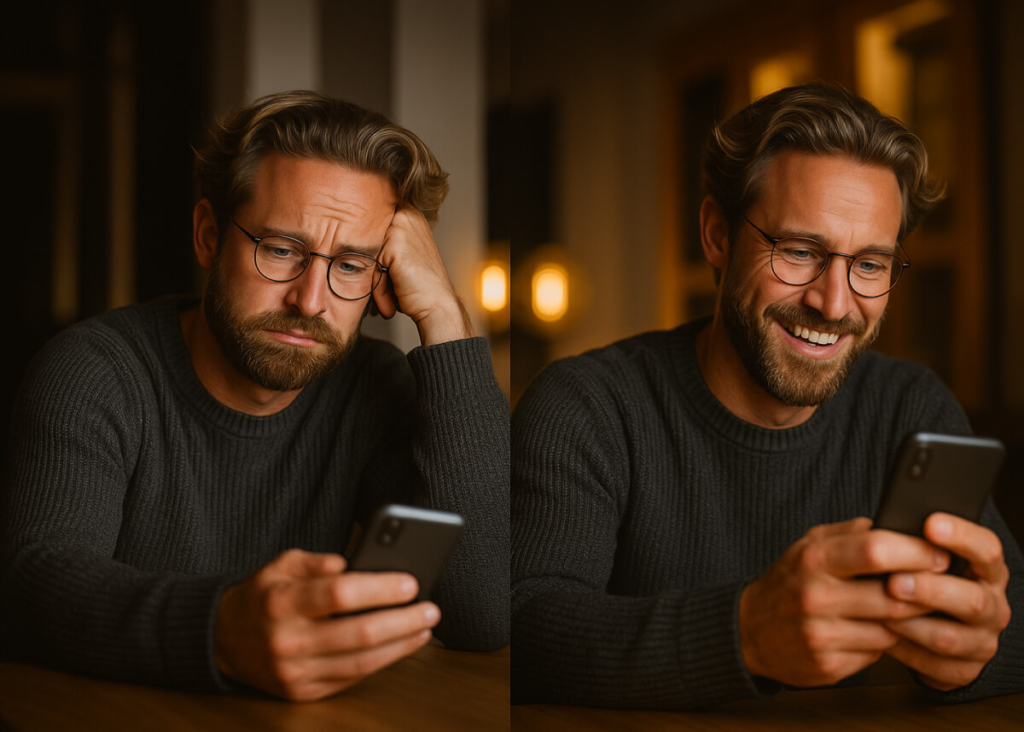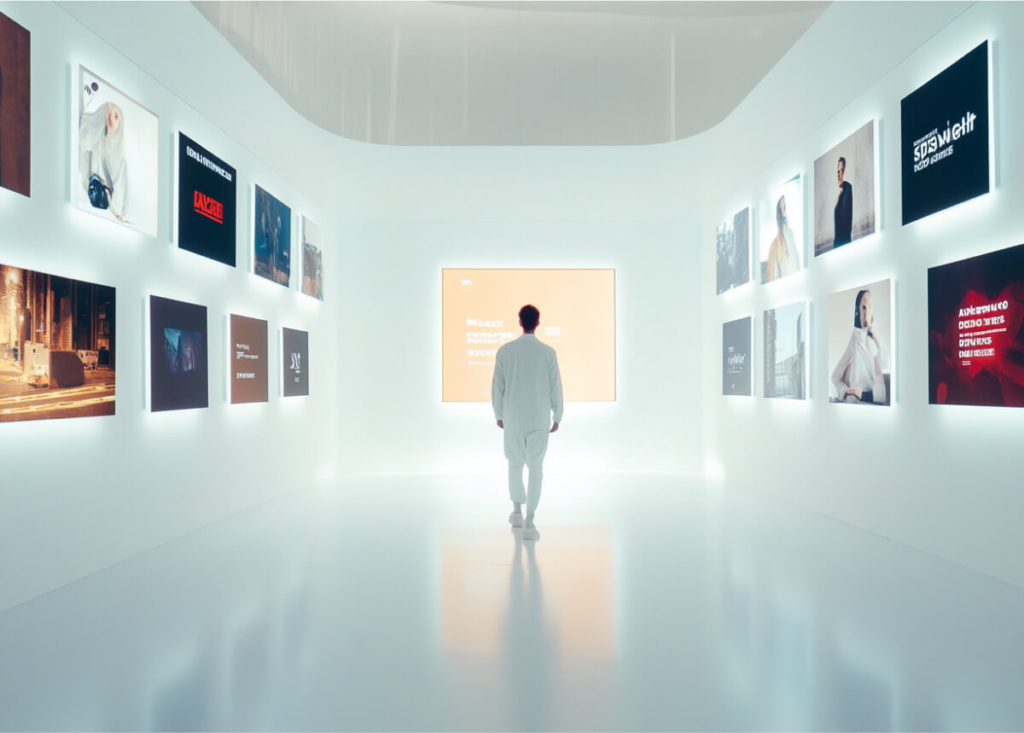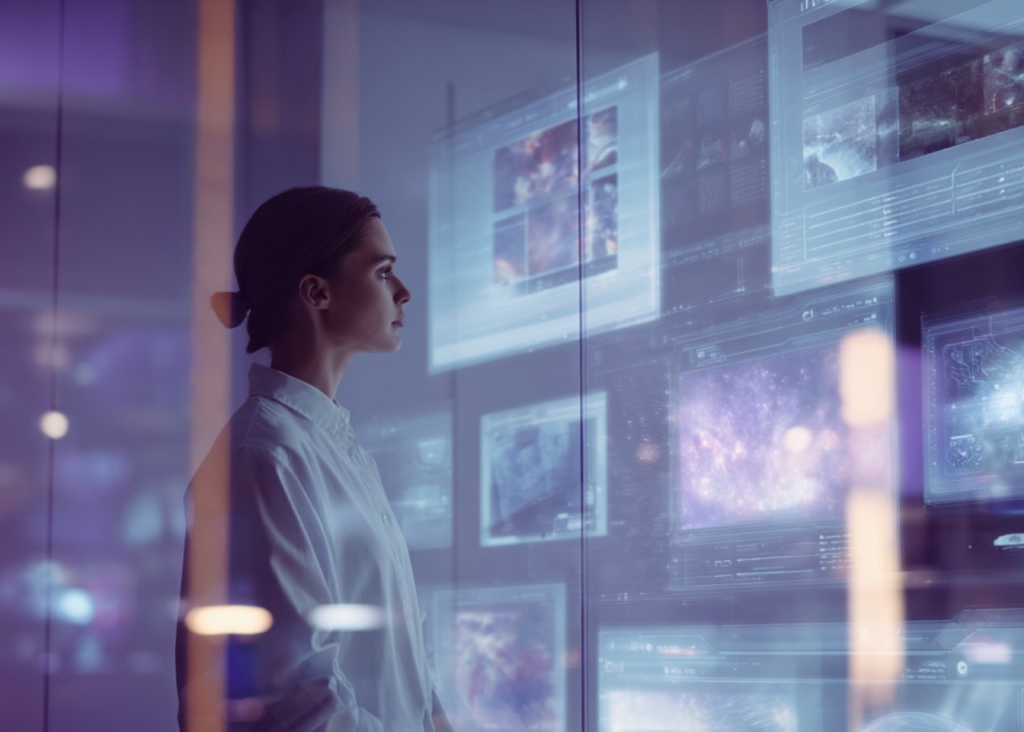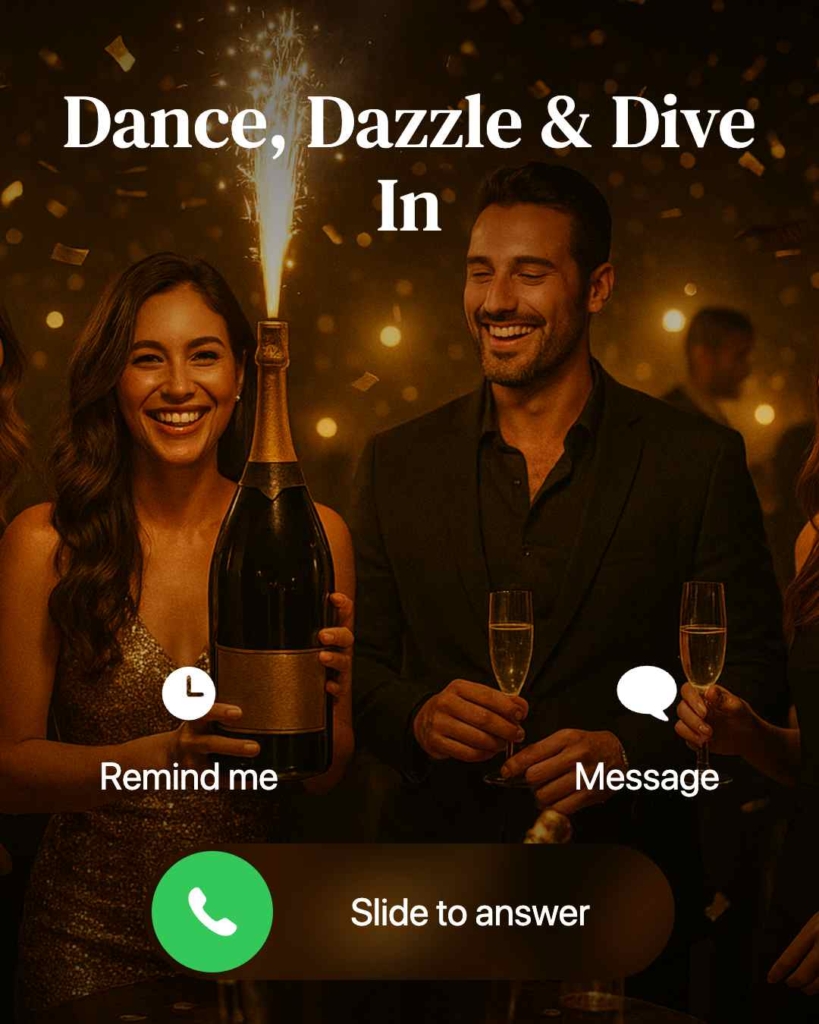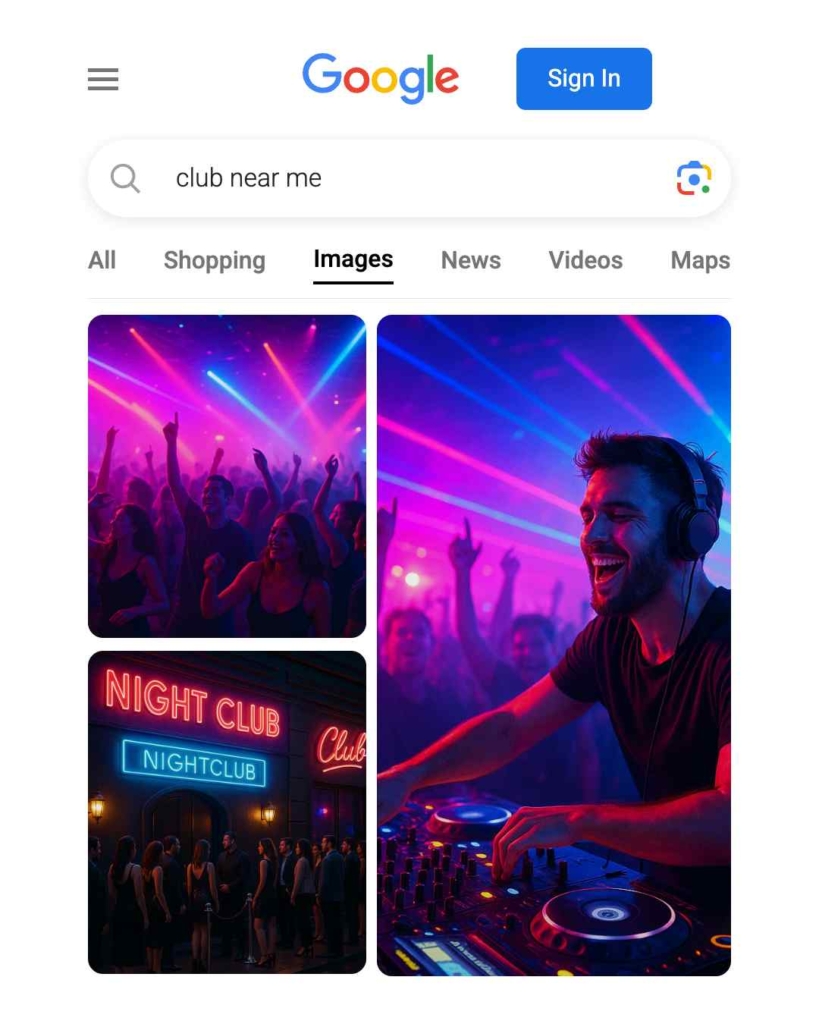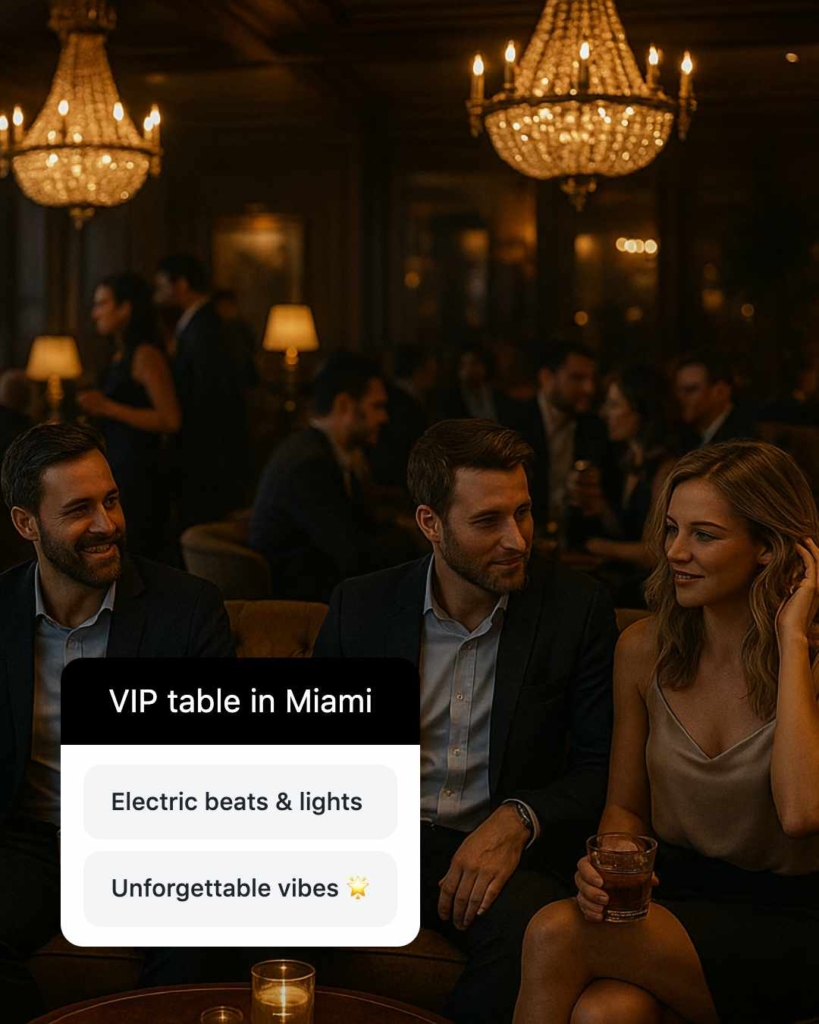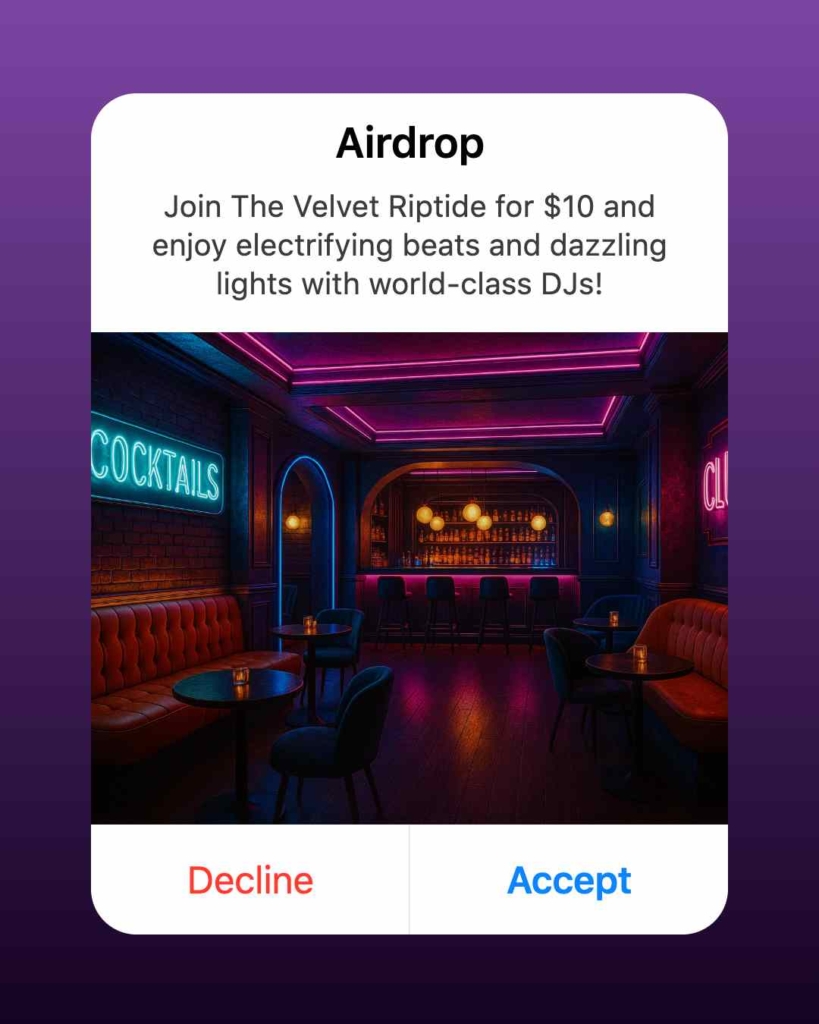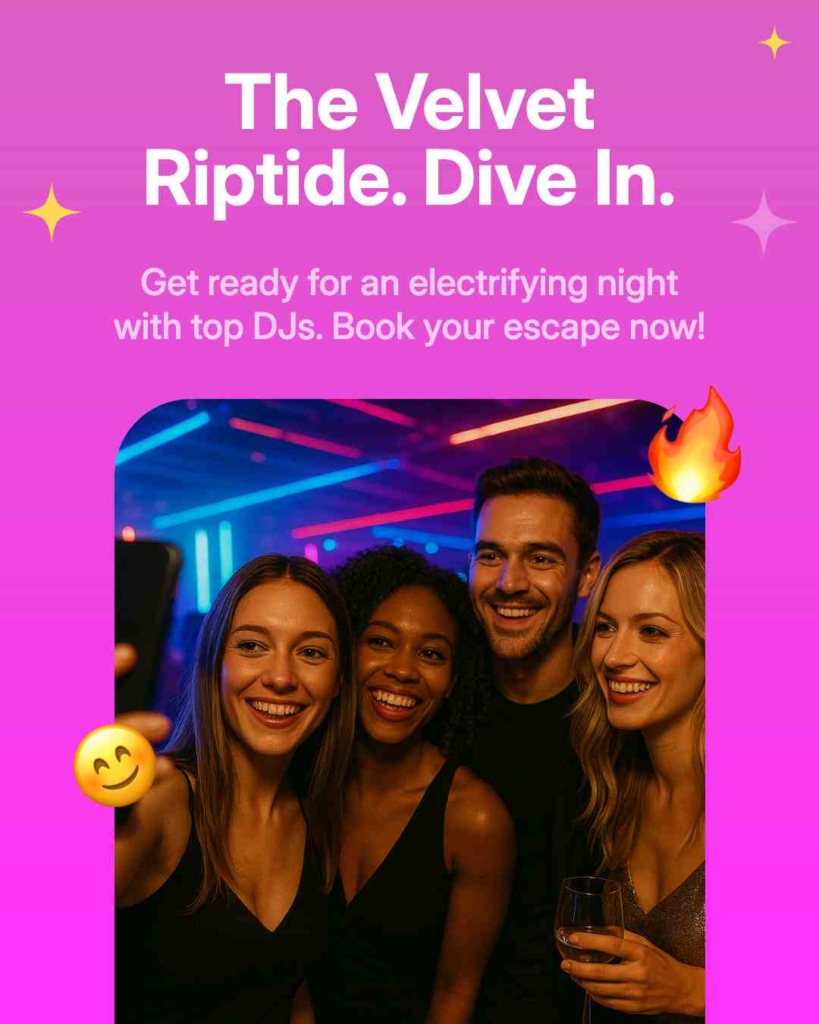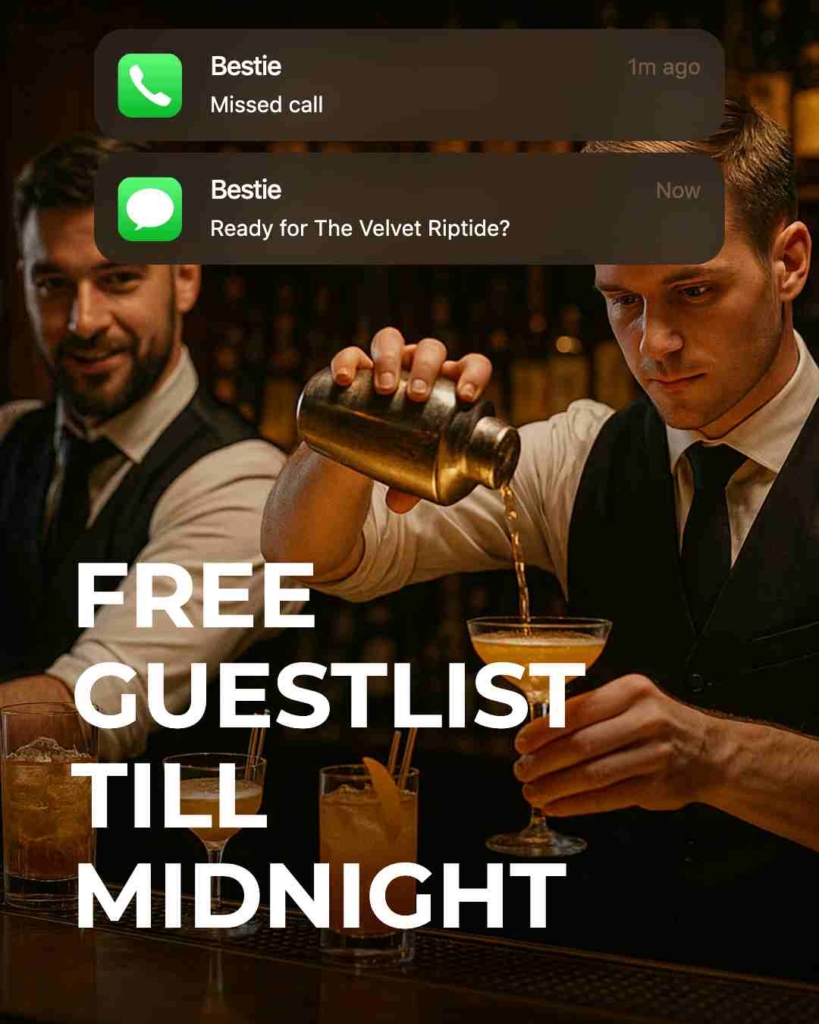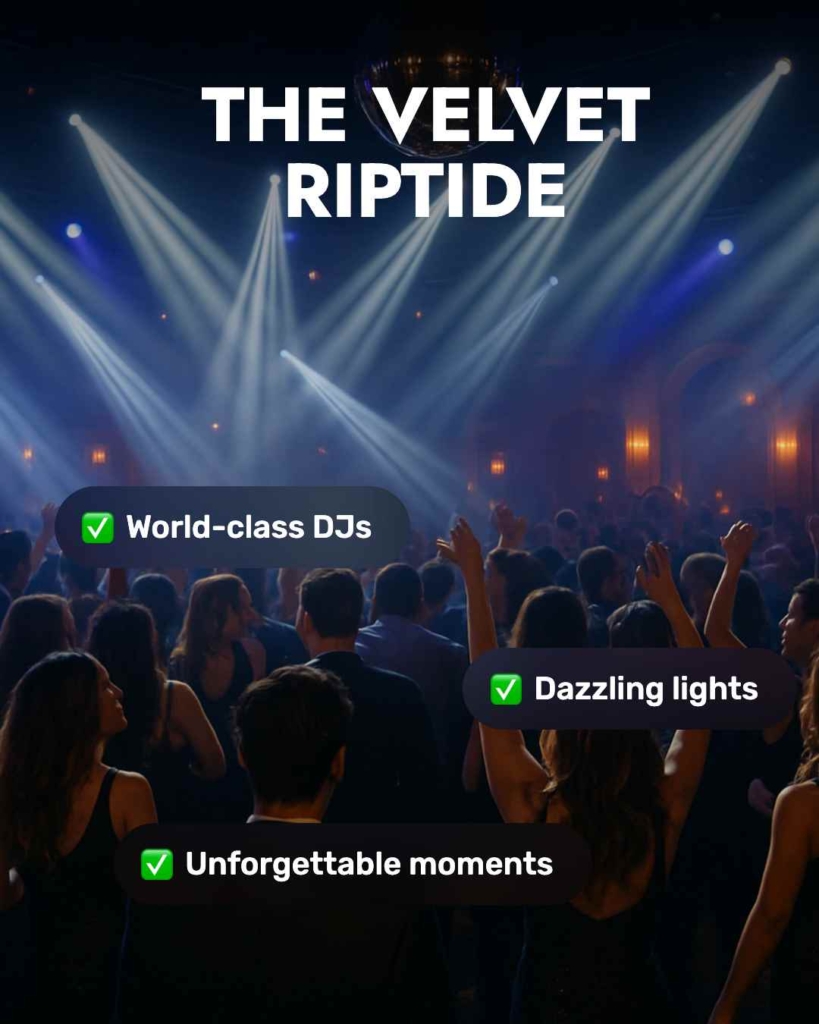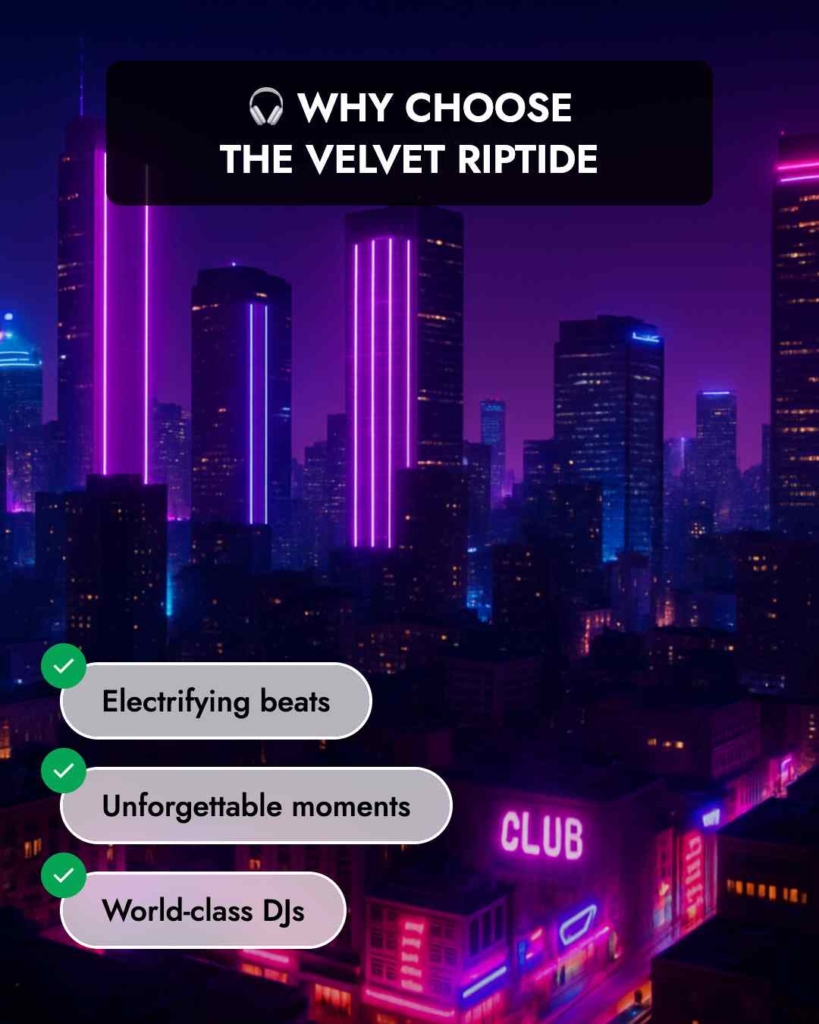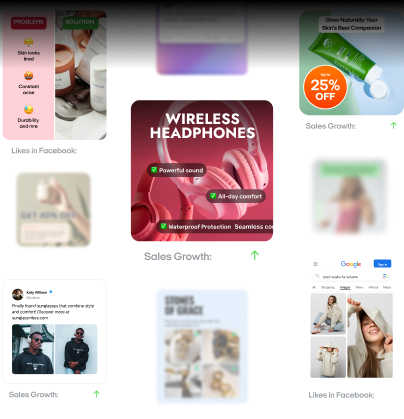8 marketing strategies for nightclubs that fills the floor every weekend
Want your club packed, not just open? Zeely AI shares eight proven marketing strategies to drive buzz, bookings, and full dance floors.
At 11:15, the line outside your nightclub tells the story. Either it snakes past the corner or it doesn’t exist. That moment is the result of smart nightclub marketing.
This playbook shows how clubs stay full: you get found, you look worth showing up for, you nudge people at the right time, you keep them in your orbit, and you measure more than likes.
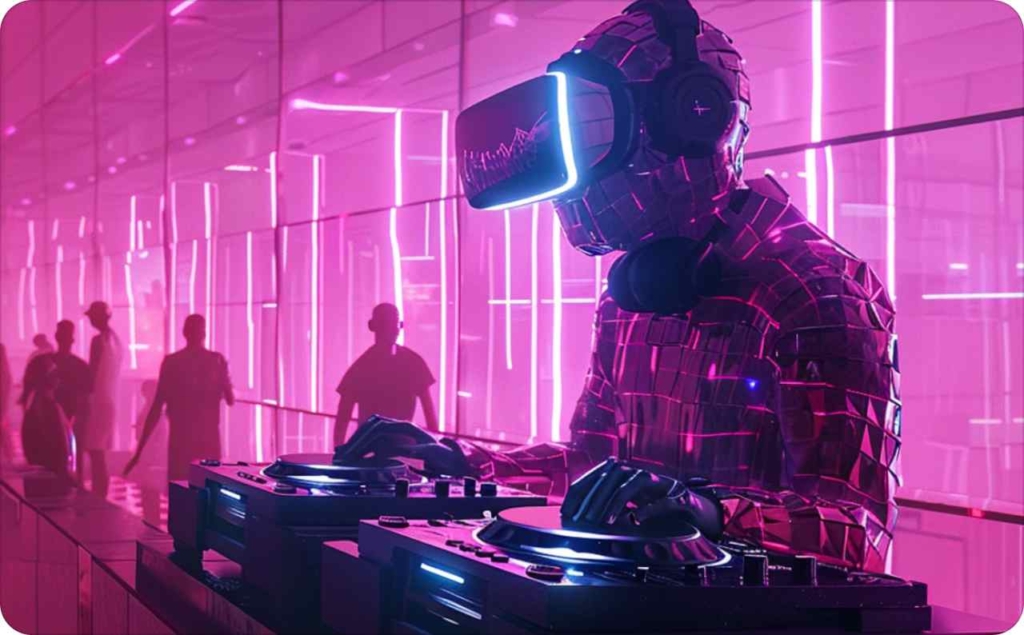
Brand, audience, and night format
A nightclub isn’t just a room with speakers. It’s a brand and who shows up depends on how clearly you define your crowd and your feel.
Start with your core audience. Are you pulling students craving low cover charge and drink deals? Or bringing in professionals who expect VIP tables, higher price points, and a strict dress code? Your weekly formats should match: maybe a resident DJ series on Fridays, Latin nights once a month, or theme nights with specific music vibes. When people see your format, they know exactly what to expect.
Your visual identity needs to reinforce that. A logo that pops on both physical flyers and digital promos. Colors, typeface, and vertical 9:16 shots that match your energy, whether it’s gritty underground or polished rooftop. When someone sees your Story or clip, they should feel it’s “you” before they read anything.
Here’s what data says: HubSpot reports that short-form video and visual storytelling deliver among the highest ROI for marketers in 2025. That means your shot-style, your teaser reels, and your branded clips are essential currency.
Cues like flyers vs digital promotion style, a clearly communicated dress code, or a known resident DJ can position your club before someone ever walks in. Every detail reinforces who you attract and what your night feels like. Consider pairing your format work with creative testing so you know which visuals move people. See our guide on creative testing for ads.
Be found: Local SEO + event distribution
Most nights out begin with a search. Someone types “clubs near me,” and the results in Google’s map pack decide who gets in the game.
Your Google Business Profile needs to feel active. That means correct categories, updated hours, fresh event photos, and Posts with lineups or flyers. Use FAQs like “What’s the cover charge?” or “Is there a dress code?” when people search. Reply to reviews fast. If your profile seems dormant, people assume your club is too.
Here’s what the data backs up: Think with Google finds that 8 in 10 online consumer journeys involve multiple touchpoints — browsing, scrolling, searching, before a purchase is made. That means people don’t just see your event once. They’ll see it via an event listing, a Google Post, a review, maybe even a map result. Each piece adds up.
Event structured data helps Google display your nights with date, time, ticket info right in search. On top of that, post your events across local platforms. The more places your event shows up, the more threads lead back to your door.
Map-pack readiness also matters. The photo pinned in that map result should show energy — a full dance floor, not an empty stage. Add proximity creatives so when someone is a few blocks away, your club pops up in “near me” searches or map-based ads.
Some people will ask, “How do I get my nightclub on Google?” or “What should I post on GBP?” The answer: treat your Google Business Profile like your front door. Keep it updated, branded, and always showing what’s happening tonight, not what happened last month.
Website as conversion engine
A nightclub website should convert. Think of it as your digital front door, the place where guests decide whether they’re going out tonight or not.
The structure needs to be simple and predictable: a “What’s On” page showing upcoming nights, a guestlist sign-up, clear VIP/table booking options, and a gallery of photos or recaps from past events. When people land here, they’re looking for answers, not digging through menus.
VIP and table booking UX is where clubs often lose money. Deposits should be clear, minimums transparent, and payments frictionless — Apple Pay and Google Pay included. Even better if you let groups split costs upfront. A guest should feel more like they’re reserving an experience, not deciphering fine print.
Performance matters most on mobile. Your site has to load fast, show media in 9:16 vertical format, and keep a sticky “Book” CTA visible as people scroll. Some clubs even add a live wait-time or line-length module, so guests know whether to book or just head over.
Here’s what Google says: to provide a good experience, Largest Contentful Paint should occur within 2.5 seconds of page load, Interaction to Next Paint under 200 milliseconds, and Cumulative Layout Shift less than 0.1. When these metrics are met, people perceive the site as faster, trust it more, and are more likely to commit.
Common questions keep coming up — “Do I need a deposit for a table?” or “Can I book a nightclub online?” Your site should answer those directly in short FAQ sections. The clearer you make the process, the more likely guests are to commit before the night begins.
The goal is simple: a website that doesn’t just tell your story but fills your floor.
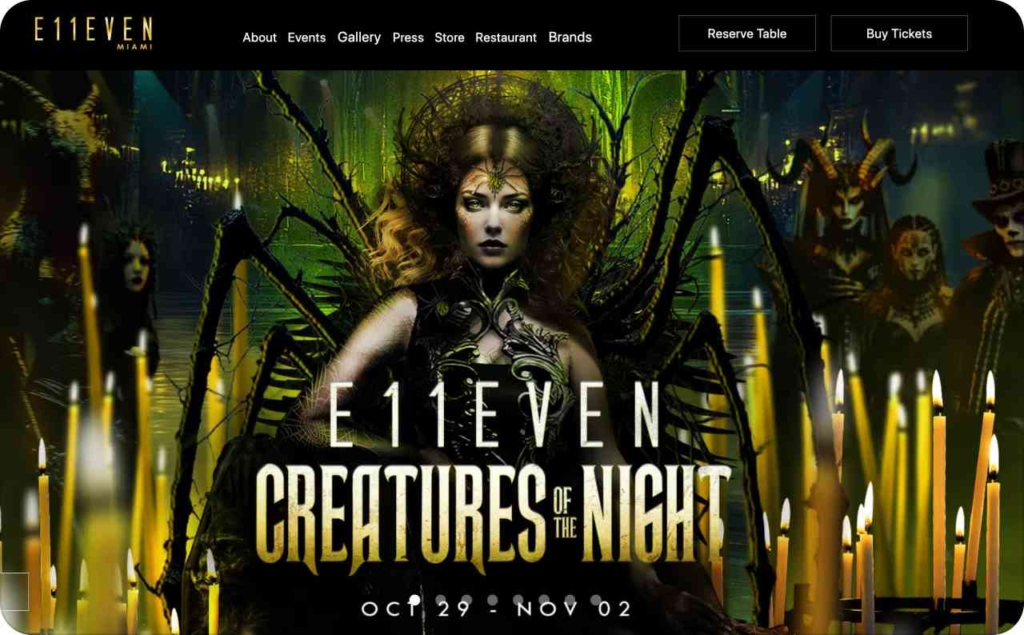
Photo source: E11VEN MIAMI
Organic content system
The best nightclub content marketing doesn’t happen by accident. It follows a rhythm — the same way your nights do. A weekly calendar gives structure: Monday teasers, mid-week drink features, Friday DJ previews, Saturday behind-the-scenes, Sunday recaps. Guests learn to expect it, and that consistency builds trust.
Different content hits at different moments. A quick backstage clip works for Instagram Stories. The drop at midnight belongs in a polished Reel. A 20-second phone video of the bottle parade feels right on TikTok. When guests see the same energy across platforms, your club’s vibe feels consistent, magnetic, real. Use AI video ads generator for fast content production.
Here’s what recent data shows: TikTok says 2 out of 3 users like when brands partner with several creators, not just one. That means mixing micro-influencers, campus reps, and local creators is essential if you want reach and authenticity.
Your creator grid should have clear terms: what they get, what you require, and how much creative freedom they have. Reward UGC, encourage candid posts, push drink features, countdowns, DJ teases — these hit because they feel immediate, not overproduced.
FAQs you’ll want visible: What should I post on Instagram? Do TikTok ads work for clubs? The answers live in what works: content that feels part of the night, boosted smartly, not sold too hard.
The goal is simple: keep the content flowing so followers don’t scroll by, they feel like they’re already inside.
Paid demand you can dial
Word of mouth and content give you momentum, but paid nightclub advertising is what keeps the floor consistently full. The advantage is control, you can turn it up or down depending on the night.
Search and PPC ads are the first lever. Target intent terms like “nightclub near me” or “VIP table [city]” and add sitelinks so people can click straight to Book, Guestlist, or Tonight’s lineup. It’s not about flooding the web with ads; it’s about being the answer when someone is actively looking.
On social, ads work best when they match your night format. A Thursday Latin night should run with creative that feels like that crowd, not generic club branding. Offer ladders matter too: early entry discounts or two-for-one drinks before 11 p.m. pull people in earlier and spread traffic across the night.
Advanced tactics give you more control. Geo-conquesting, running ads near other clubs, campuses, or arenas, catches people already out and looking for a next stop. Late-night dayparting lets you boost posts in real time when you know the club is buzzing, turning a live moment into immediate demand.
Here’s what Google is seeing: advertisers using the newer Demand Gen campaigns are getting about a 26% year-over-year increase in conversions per dollar spent for leads or purchases.mThat means you make each ad dollar count more.
Don’t forget retargeting. Someone visits your site but doesn’t book? Serve them a VIP/table upsell. Someone came last week? Recapture them with a highlight reel and a link to RSVP again.
People ask all the time: “How much do nightclub ads cost?” or “Are Instagram and Facebook ads worth it?” The truth: costs vary by city and audience, but when ads are tied directly to formats, tables, or covers, they pay for themselves. Social ads aren’t wasted impressions when they’re built around the nights that actually drive revenue.
Paid is the lever you can dial, steady when you need a baseline, heavy when you need a packed floor.
Lifecycle: Email, SMS, and WhatsApp
Packed nights result from consistent, direct steps. The best clubs don’t just blast messages. They unify everything — POS systems, ticketing, Wi-Fi logins, door scans, into one guest profile. That way you see who shows up, what they like, and what message will actually move them.
The messaging rhythm matters. Send pre-event nudges to confirm RSVPs or build excitement. During the night, use MMS boosts or WhatsApp stories to show the energy inside. After, follow up with photos, a preview of the next event, and referral offers so people bring friends.
Segmenting makes the difference. Treat VIPs and bottle buyers differently from new arrivals or guests who haven’t been in 90-180 days. Each group responds better to messages tailored to what matters to them.
Here’s what Mailchimp data shows: the average email open rate across all industries is 21.33%. That means roughly one in five people open your email, getting that rate up matters.
People often ask: “SMS or email, which works better for nightclubs?” Email is solid for your weekly calendar and recaps. SMS/WhatsApp win when timing is tight — reminders hours before doors, last-minute offers.
Lifecycle messaging isn’t about more messages. It’s about the right message, at the right moment, to the right guest. Done well, it builds a habit.
Partnerships & offline that still work
Not everything happens on TikTok. Some of the most reliable nightclub marketing tactics are still built offline, where the night actually starts.
Hotels and concierges remain powerful partners. Tourists often ask the front desk where to go, and if your club is on that list with a guestlist QR code or direct booking link, you’ve already won half the crowd. The same goes for ride-share apps: promo codes tied to your club can push late-night riders straight to your door. And food partners? A midnight pizza spot handing out club flyers with your QR guestlist keeps the night moving.
Printed flyers and posters aren’t dead. What’s changed is how they work. A static flyer can fade fast, but a design with a dynamic QR code tied to your guestlist or tonight’s lineup bridges offline and digital. Someone scans at the bar, joins the list, and gets an SMS confirmation within minutes. That’s a trackable reach you can measure.
Here’s a stat that backs up how important review platforms still are offline-adjacent: Yelp reports that nightlife is among the business categories on its platform, even though it’s a smaller category, Yelp has 308 million cumulative reviews across all business types as of December 2024. That volume signals that people are reading and trusting peer posts when choosing where to go out. If your club has strong visibility on Yelp, you’re part of that decision set.
Community still matters too. Sponsoring a local sports team, a campus event, or a neighborhood festival keeps your brand visible in ways digital ads can’t. People might ask: “Do flyers still work for clubs?” The answer is yes, when they’re smart, interactive, and tied back to your data.
Offline isn’t old school. It’s the second half of the funnel — the part that turns curiosity on the street into feet on your floor.
On-night ops × marketing triggers
Marketing doesn’t stop once the doors open. The smartest clubs treat the night itself as alive, you adjust in real time.
Capacity drives automation. If the floor’s light at 11:00, trigger a nightclub SMS blast: “Free guestlist till midnight, show this text at the door.” If you’re approaching full capacity, shift to pushing VIP/table upsell or “last chance cover” messaging. Marketing and operations work together, not in silos.
Staffed well, someone handles rapid edits, boosted posts, and replies in direct messages. Guests decide in minutes — a quick DM reply can make someone choose your club over somewhere else.
Here’s what Google’s scheduling power gives you: you can set up to 6 ad-schedules per day per campaign so your Google Ads campaigns only run during those hours that matter. That means you can raise visibility when the line’s forming, and pull back when people are already inside.
Weather or calendar shifts are your cues. Stormy night? Push ride-share promos so no one skips because of rain. A city festival or holiday means people are in “go mode” early — match that energy in your creative and messaging.
When you treat on-night operations as part of marketing — capacity triggers, ad schedules, and rapid responses, every live moment becomes an opportunity, not just something you manage.
Ready-to-use playbooks
Some nights follow the usual rhythm. Others don’t. Launching a new nightclub event, saving a slow Thursday night, booking a headline DJ, or riding a holiday weekend all need their own nightclub marketing playbook. The difference is how you manage the days around the event.
Launching a new night
Two weeks out, you start teasing: Instagram Stories, whispers, digital flyers appearing on feeds. One week before, nightclub ads begin — “new night, new sound.” Day-of, SMS marketing and guestlist invites push urgency. Morning after, recap drops; guestlist links for next week go live. By Tuesday, you’ve seen what worked, who booked VIP tables, which creative drew response and weight the next week accordingly.
Filling a thursday
Even a low-traffic Thursday can become memorable. You give it identity, perhaps Latin night or throwback tunes, then send the message when people are deciding what to do: “Doors open at 10, reply YES for guestlist.” Around 9 p.m., geo-targeted nightclub ads light up nearby neighborhoods. By midnight, the room feels alive.
Headline DJ weekend
You don’t wait for hype. Three weeks ahead, DJ teases go in Reels or TikTok. The week of, search ads target “headline DJ [City] tickets.” On the night, live clips and highlights get boosted. The next morning, VIP upsells and teasers for the next big booking keep fans engaged.
Holiday weekend
Competition is stiff. That’s why you prep early: event listings a month ahead, influencer clips seeded, digital flyers circulated. Your messages layer: invite early, remind day-of, share moments during the night. After, you drop a thank-you and begin stoking anticipation for the next holiday.
Here’s a stat that backs up using creators and content that feels real: HubSpot found that in 2025, “micro-influencers or small creators” are delivering higher engagement and are more cost-efficient than large influencers. That means building a creator grid or leaning into UGC is one of the strongest moves for reach and authenticity.
These aren’t checklists. They’re repeatable rhythms. Messaging, assets, spend, triggers, follow-ups — they all snap into place. What shifts each time is the story you tell, the crowd you pull, the moments you lean into.
Templates & checklists
Even the best nightclub marketing plan falls apart if the details slip. That’s where templates save time and keep the floor full. They make sure the essentials happen week after week, no scrambling, no guessing.
Your digital foundation comes first. An event structured data snippet ensures Google understands your calendar and displays it directly in search. A simple Google Business Profile routine — categories checked, hours updated, new photos posted, reviews answered, should live on a weekly checklist.
Content stays consistent when you’ve got a framework. A nightclub content calendar outlines the Stories, Reels, and TikToks for each day. Pre-built SMS and WhatsApp templates make it easy to fire off reminders without rewriting every message. Even the words matter: sharp VIP microcopy — short, clear lines for table bookings, closes gaps that sloppy text leaves open.
On the night itself, details matter. A UGC release note lets you repurpose guest content with permission. A photographer shot-list ensures you don’t end up with a hundred random photos but no usable crowd shots, bottle parades, or DJ moments.
Templates aren’t just paperwork. They’re the systems that keep your nights consistent and consistency is what turns first-timers into regulars.
How to create nightclub ads with an AI ad generator
Just like with tattoo shop marketing strategies, nightclub strategies should showcase attractive ads. Great ads don’t have to take weeks of editing. With Zeely’s AI ad generator, clubs can produce high-performing campaigns in minutes, not days. The result: faster launches, easier workflows, and ads built to convert.
Here’s how to use Zeely’s AI ad creation process step by step:
- Add your product URL or Shopify store. The platform automatically pulls brand details, images, and offers, so you don’t start from scratch
- Choose your format. Pick between static display ads, short video ads, or AI-generated avatars, whichever fits your night’s vibe best
- Let the AI generate your copy and visuals. The built-in AI script tool writes headlines and CTAs while designing visuals that match your brand style
- Make quick edits. Adjust colors, swap text, or drop in a music track. Edits take seconds, and the design stays on-brand
- Launch directly through Meta integration. Send ads live to Facebook and Instagram in one click. No exporting, no juggling platforms.
- Bulk generate for A/B testing. Spin up multiple ad variations at once, then test what pulls the most clicks
The benefit of this workflow is clear: every action comes with time saved and conversion potential gained. Instead of guessing at creative, you’re iterating quickly and pushing ads live while the energy is still fresh.
Zeely’s fast ad generator cuts out bottlenecks and adds the data-driven polish that fills guestlists. By automating ad creation, you save hours, improve CTR, and increase ROI. In short: Zeely is a universal growth engine for any business that needs results fast.
Conclusion
A packed floor isn’t an accident. It’s the result of doing the right things. From nightclub SEO and event listings, to a site that converts, to an organic content rhythm, to paid ads you can dial, to lifecycle messaging, partnerships, and on-night triggers — each piece works together. Add in ready-to-use playbooks, templates, and Zeely’s AI ad generator, and you don’t just have theory. You have a system.
The payoff is simple: nights that fill faster, guests that come back, and marketing that finally feels in rhythm with the energy of your club. With the right tools and consistency, you can stop guessing and start knowing how every night gets built.
Zeely was made to help with exactly that — creating fast, conversion-focused ads that keep guestlists growing and ROI climbing. The next move is yours.
Read more marketing ideas and strategies
Also recommended
